 Back to Learn page
Back to Learn page

The Hidden Costs of Trading
“The idea is great, but why is the app the same price as my Spotify?”
Someone left this comment on one of our YouTube videos, when we officially launched Fennel to the public in May 2023.
I think it’s a great question, and one that deserves a thoughtful answer. So in an attempt to explain why Fennel costs $4.99 per month, I want to take some time diving into how investing in securities can result in a handful of hidden costs—beyond the fees you see on the surface. By doing so, I hope to give extra context for why Fennel opted for its monthly subscription model as opposed to adopting the business model of many other brokerages.
Diving into the costs of trading
The rise of zero-commission trading has gained immense popularity through both newer fintech investing apps and mainstream online brokers. The allure of trading without paying any commissions has (understandably) attracted a large number of retail investors to participate in the stock market. However, beneath the surface of this seemingly advantageous arrangement lies a complex issue of hidden costs and missed opportunities.
As the trading landscape continues to evolve at a rapid pace, market structure and order routing is becoming increasingly complex, and very important for investors to understand. As retail brokers, it's our responsibility to engage in discussions with our clients about how market structure and order routing impacts trading costs. This ensures that our clients have a clear understanding of what they are paying for.
The explicit cost to trade (i.e. the commission) is on the surface, and thus the easiest cost to spot. But there are other costs associated with trading that are not immediately visible, but which you are still paying for. These are the implicit and opportunity costs of trading.
Some examples of implicit costs are: the bid-ask spread, impact cost, and timing risk. When we say opportunity costs, we refer to the cost associated with missing out on optimal trades by trading at or close to the bid-ask spread. What does this last part mean? Let’s break it down.
Bid-ask spread
Bid-ask spread: the difference between the bid price (how much a buyer is willing to pay) and the ask price (at what price the seller is willing to sell at).
The wider the spread, the more expensive the cost to trade. For example, if the bid is $10 and the ask is $11, you can sell your stock and get $10 in return, or buy that same stock for $11. This is a $1 spread.
Now, if the spread narrows and the bid is $10.49 and the ask is $10.51, you can now sell your stock and receive $10.49 or buy stock for $10.51—a $0.02 spread. As a result of this narrower spread, both the buyer and seller each saved $0.49 per share.
It’s important to know that the bid-ask spread does not necessarily represent the best available price. There is sometimes liquidity available between the spread. Finding this liquidity can further reduce the execution cost, which means saving the individual investor money.
How does the individual investor get access to this hidden liquidity? It comes down to how the broker routes orders. Those brokers that have the best methodology for finding liquidity between the spread (aka hidden liquidity) will deliver a better price, further reducing the cost of execution.
This is where the logic of a router is very critical. For example, let’s say you're a buyer and the bid is $10 and the ask is $11. If you go straight to the market you may pay that $11. However, if your broker is using a “good router” to execute your order, they may be able to find liquidity in the middle of the spread at $10.50, thus saving you $0.50 per share.
That’s real money saved for the individual investor and it adds up!
Routing logic & opportunity costs
We believe that the quality of a router is one of the most important factors to consider when it comes to executing orders for the individual investor.
Routers, although not a conventional cost of execution, can either significantly increase or decrease trading cost for the individual investor. To look at it one way, bad routing of orders will take money out of the individual investors pocket whereas good logic will keep money in their pocket.
A good router will take into consideration both historical and real-time information when deciding how best to route an order. It will make decisions such as which type of venue to route to (exchanges, ATS’s, market makers or other liquidity providers) and to which specific one(s). A big factor to take into consideration when executing orders for individual investors is its ability to find hidden liquidity at the midpoint of the bid-ask spread. As noted earlier, finding midpoint liquidity means cost savings for the individual investor.
We believe that the quality of how a retail broker routes orders can be the biggest factor in providing their clients with the best possible price, saving them real money!
Impact cost
Impact cost: the cost incurred by investors when buying or selling a stock where the order size is large relative to the liquidity that is available in the market.
Large orders will push a stock either higher or lower to the point where it’s trading well beyond its expected price range. This is sometimes followed by what is known as price reversion, where the stock price goes back to where it was trading before the large order entered the market.
The difference between your execution price and the price where the stock resumes trading at the completion of your order, is the impact cost.
Although this is not a significant cost for the majority of retail orders, it’s something you may want to be aware of, especially when trading thinly traded names.
By using a router with good logic, your broker may be able to avoid this cost.
Timing risk
Timing risk: arises from the dynamic nature of financial markets, where prices can fluctuate significantly throughout the day. The longer it takes to execute an order, the greater the risk of price move, either in your favor or against you.
For retail size orders, this comes in play as a result of:
∙ Limits (depending on the marketability of the limit, it may take longer to execute the order)
∙ Length of time between the time when you decided you want to enter a trade to the time you actually entered the trade.
∙ Time needed to trade a more thinly traded security where your order is large relative to the security’s Average Daily Trading Volume (ADV)
To conclude, when analyzing the overall cost of executing a trade, it’s important to consider not only the explicit cost of commissions but also the various implicit costs and the quality of how the broker routes orders for execution. The implicit costs do add up and routing methodology does matter and both can make a trade expensive for the individual investor if not taken into consideration by the broker.
So don’t be lured into a false sense of security when a broker advertises “commission-free” trading, because it doesn’t necessarily mean “zero cost.”
Actually answering the opening question
Commission-free trading apps may appear to be friendly for retail investors, but after reading this article, hopefully you have realized that “free” doesn’t always mean free. With practices like payment for order flow becoming prevalent, there are other costs that investors may unknowingly bear.
Instead of solely focusing on eliminating commissions, we at Fennel have prioritized reducing the overall cost of trading by leveraging technology used by professional institutional traders. Our goal is to be fully transparent with our clients and employ innovative routing and execution models that offer the lowest possible cost to trade. This all equates to cost savings for our clients.
Our $4.99 monthly fee reflects the operational costs of running Fennel. It helps us cover the expenses of operating a brokerage, executing trades (did I mention Fennel is also zero-commission?), and maintaining a team of licensed professionals.
Moreover, your $4.99 subscription provides access to a wide range of financial and ESG data sourced from 90 different vendors, along with easily understandable shareholder voting information. We cover the costs of obtaining and compiling this data, which is then distributed among our users through the subscription. These tools we offer are of institutional-investor-grade quality and are available in one convenient place.
Our aim as a brokerage is to be transparent and ensure that we don't hide anything from the people we serve. We hope this explanation sheds light on the total cost of execution and why Fennel operates on a subscription model.
∙ ∙ ∙
Michael Capelli is the CEO of Fennel Financials
∙ ∙ ∙
The views expressed are those of the author at the time of writing, are not necessarily those of the firm as a whole and may be subject to change. The information contained in this advertisement is for informational purposes and should not be regarded as an offer to sell or a solicitation of an offer to buy any. It does not constitute a recommendation or consider the particular investment objectives, financial conditions, or needs of specific investors. Investing involves risk, including the loss of principal. Past performance is not indicative or a guarantee of future performance. We do not provide tax, accounting, or legal advice to our clients, and all investors are advised to consult with their tax, accounting, or legal advisers regarding any potential investment. The information and any opinions contained in this advertisement have been obtained from sources that we consider reliable, but we do not represent such information and opinions are accurate or complete, and thus should not be relied upon as such. This is particularly true during periods of rapidly changing market conditions. Securities offered through Fennel Financials, LLC. Member FINRA SIPC.

Expand your knowledge further

A year ago, we started building an investing app to bring power back to the stakeholders.

20 months ago I had a simple idea: What if capital markets could change?

The name "Fennel" is inspired by the ancient Greek myth of Prometheus.
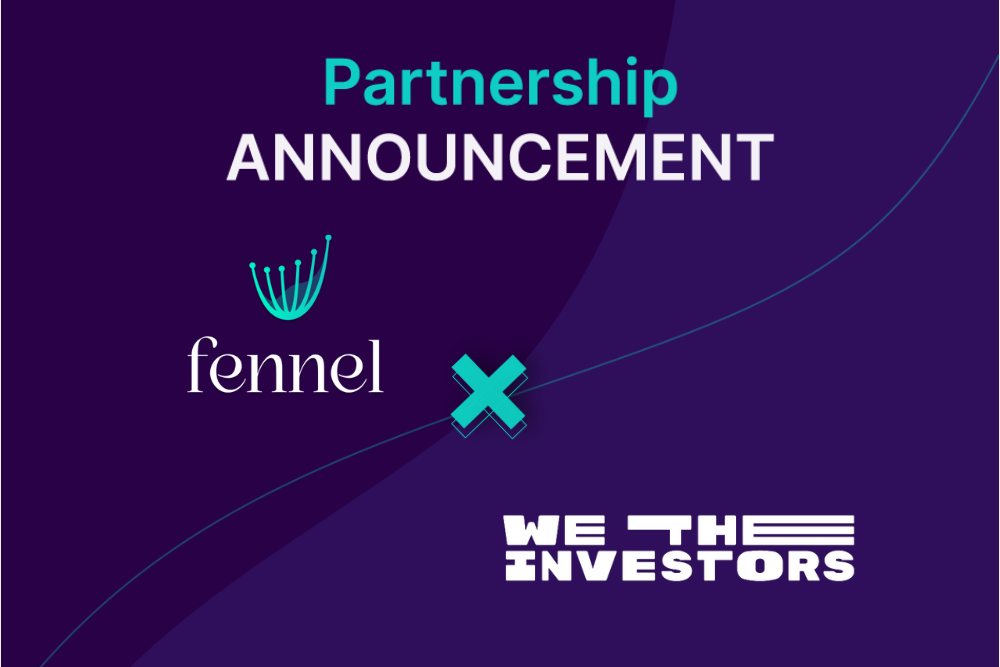
Fennel is joining forces with We The Investors to provide engaging educational content to help retail investors learn more about capital markets.
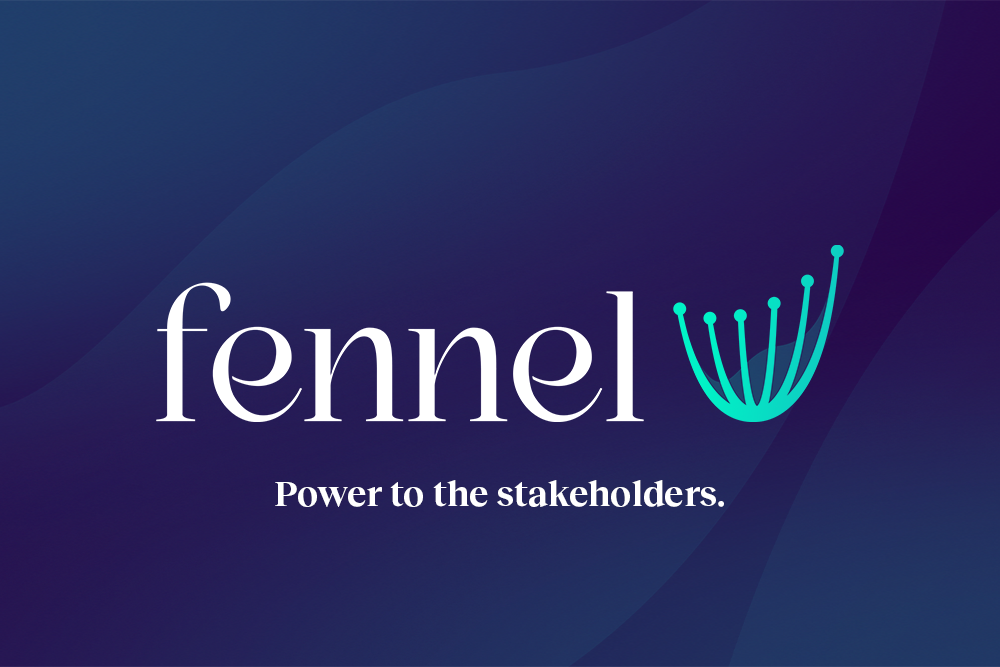
Backed by Jeff Cruttenden, founder of Acorns, Capital Factory, Temerity Capital Partners and more, Fennel has raised over $5M in funding to provide transparent financial and ESG-data to investors.

Fennel Financials joins forces with Eventus.
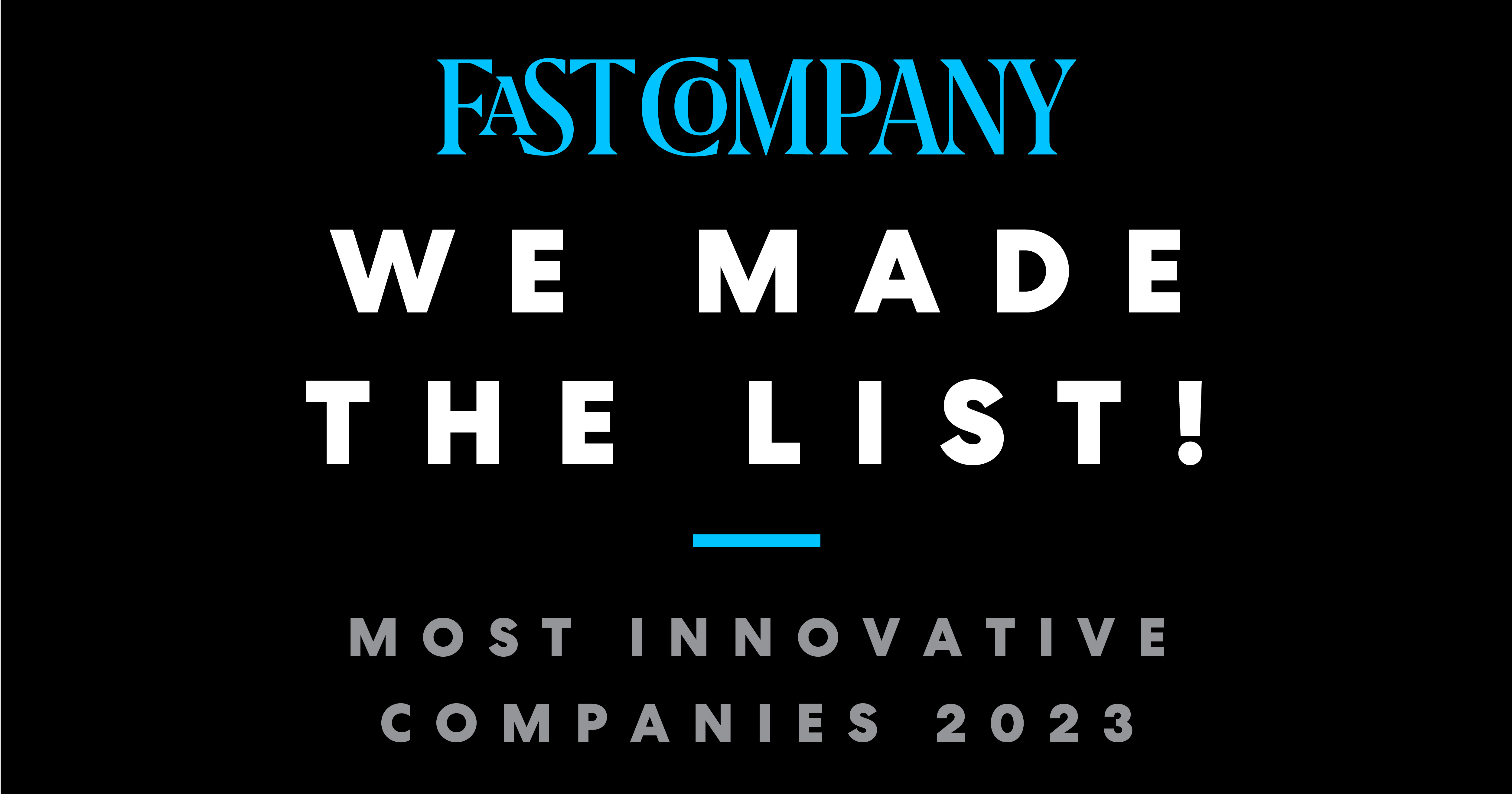
Fennel has been named to Fast Company’s prestigious list of the World’s Most Innovative Companies for 2023, joining a list of businesses paving the way in innovation and highlighting those at the forefront of their respective industries.
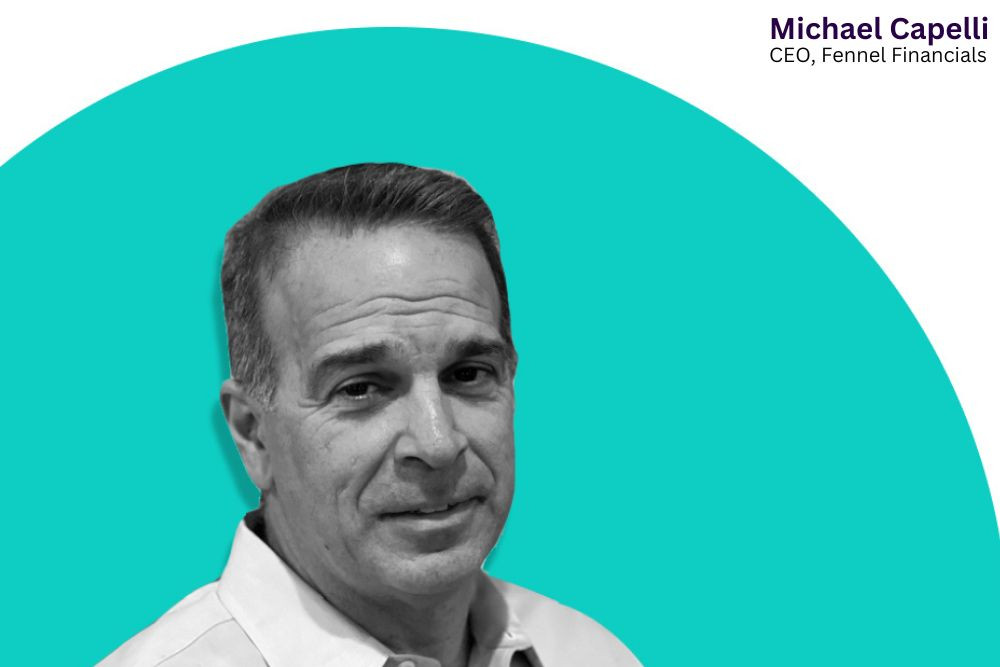
The ESG-focused retail investing platform hires Michael Capelli to lead its brokerage operations
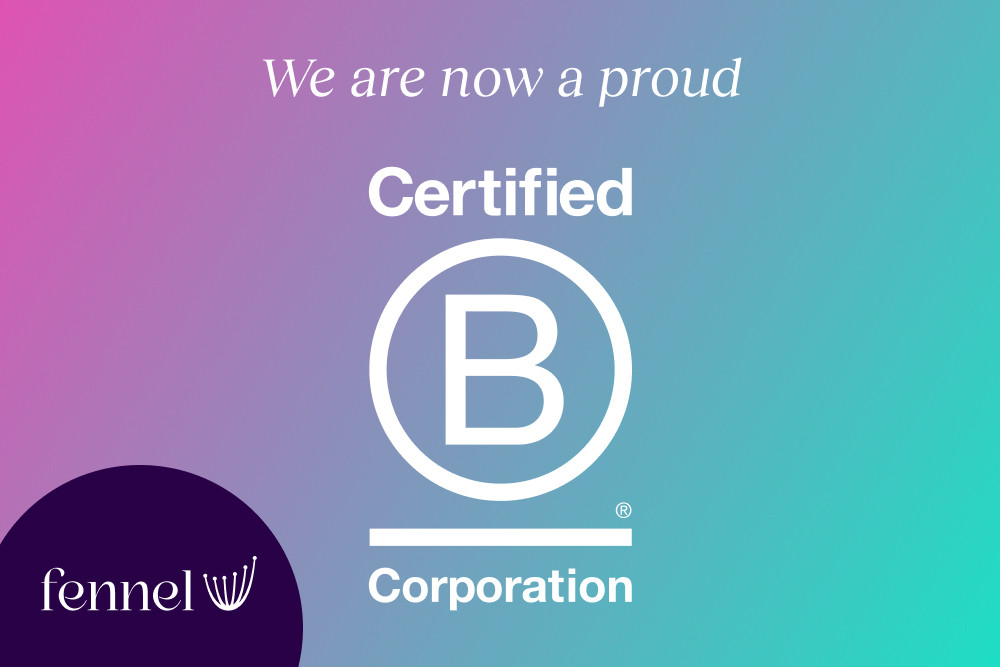
ESG & shareholder voting-focused brokerage becomes Certified B Corporation™, highlighting commitment to sustainable and regenerative economy.
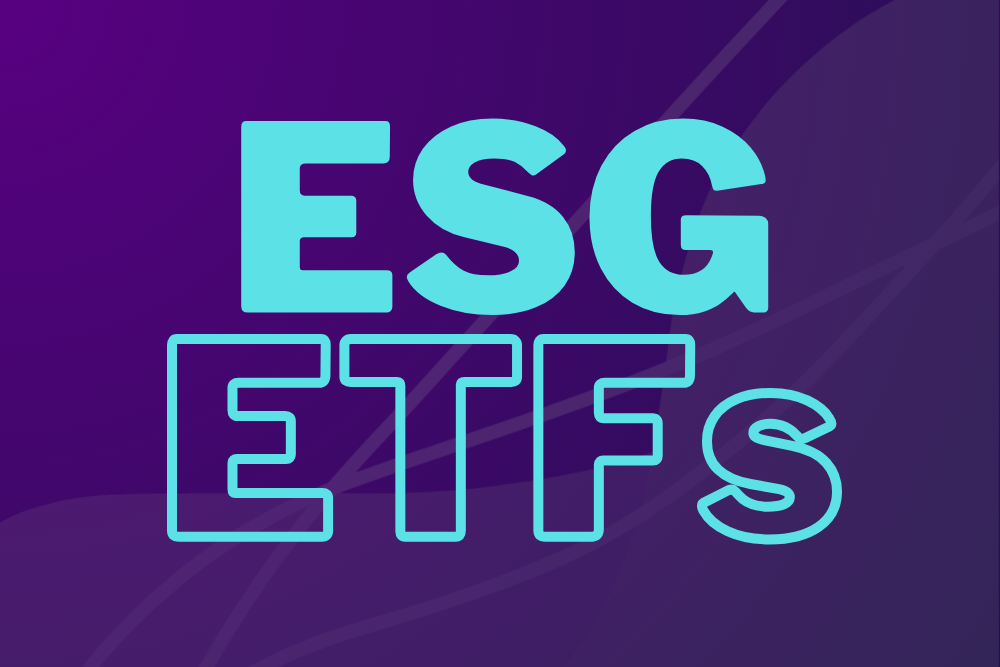
Here are some ESG ETFs you can trade on the Fennel app.
Take back the power of your investment
